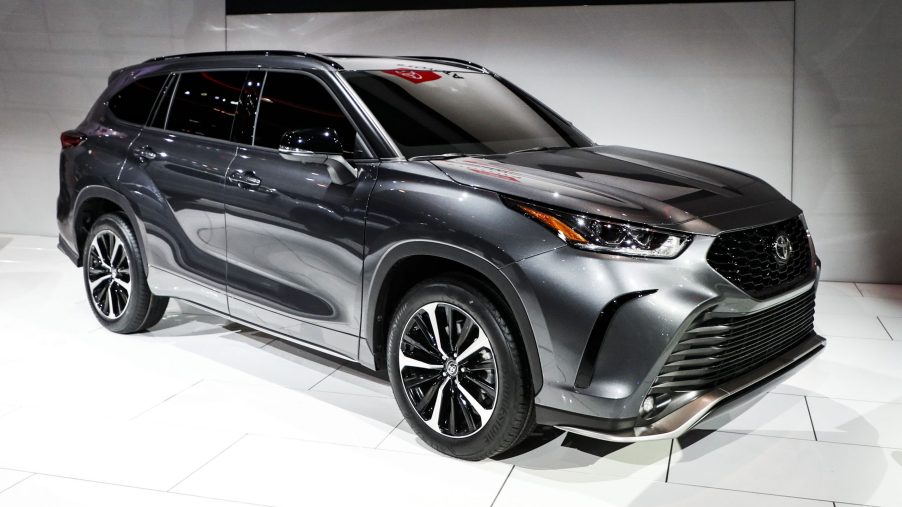
The 2021 Toyota Highlander Still Has 1 Glaring Weakness
If you need a good midsize SUV, there are plenty of excellent options on the market. Toyota recently redesigned its Highlander SUV for the 2020 model year, giving it a sporty new exterior and more standard features. However, the Toyota Highlander still trails behind its rivals in one crucial area, according to Autotrader.
Ideally, a midsize SUV should have adequate space for each passenger to get comfortable, even in the third row. This row is usually somewhat cramped, even in the largest three-row SUVs. Here’s what Autotrader had to say about the 2021 Toyota Highlander’s third-row accommodations.
The 2021 Toyota Highlander’s biggest flaw
The Toyota Highlander can seat up to eight passengers, or seven if you opt for captain’s chairs. However, compared to other midsize SUVs in the segment, the Highlander’s third row doesn’t provide enough legroom for taller riders. According to Consumer Reports, even older children may have a hard time getting comfortable in the third row of the 2020 Highlander.
Testers also said that the rear seats are too close to the floor and feel uncomfortable. Passengers relegated to the last row probably won’t be able to stand it for longer trips. This cramped feeling in the third-row was still an issue in the 2021 model. Despite this annoying issue, Autotrader still had great things to say about the Toyota Highlander.
Why the Toyota Highlander is still a good SUV
The standard Highlander is powered by 3.5-liter V6 engine that makes 295 hp and is paired with an eight-speed automatic transmission. Autotrader says this powertrain gives the car good acceleration for its size, even with every seat filled. The transmission operates smoothly and it has steady handling with no severe body lean.
Still, the Highlander handles like a large SUV, so it may be an adjustment if you’re used to driving smaller cars. In models with all-wheel drive equipped, more torque is supplied to the rear wheels if the system detects loss of traction. Higher trims also have multi-terrain select and an upgraded version of the all-wheel-drive system.
For drivers who want to save more at the pump, the Toyota Highlander is also available as a hybrid. Its 2.5-liter four-cylinder engine is paired with two electric motors and a battery pack, making a combined 243 hp. It averages an EPA-estimated 36 mpg on city drives and 35 mpg on highway trips.
For comparison, the regular Toyota Highlander only makes an estimated 21 mpg in town and 25 mpg at highway speeds. Adding all-wheel drive to the Toyota Highlander Hybrid also barely makes a difference in fuel economy. However, Autotrader reported that the CVT is a bit less refined than it is inside the gas-powered Highlander.
Both the regular and hybrid Highlanders have upscale and spacious interiors, disregarding the third row. The driver’s seating position is comfortable and allows for excellent visibility. All the controls on the gauge cluster and infotainment screen are easy to read and understand.
For 2021, the Toyota Highlander received some upgraded safety features. Land-assistance and cruise control functions got adjustments and semi-autonomous emergency steering was added. The standard safety suite comes with several other useful driver’s aids, including automatic emergency braking and LED projector headlights.
Problems you can expect with this SUV
The Toyota Highlander has a large 12-inch touchscreen, which makes it more susceptible to glares from the sun. Autotrader also thought the 2021 Toyota Highlander’s starting price is too high compared to its competition. It retails for nearly $36,000, while the Hybrid costs around $38,000.
The plentiful amount of standard features justifies the price, but there’s still the issue of the small third row. If you don’t need room for more than five riders, the tiny third row might not be a dealbreaker. Still, most owners like to get the most functionality out of their three-row SUV.



